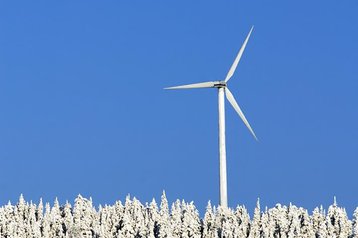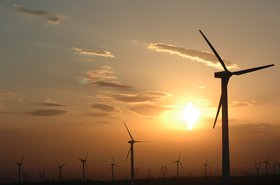In the data center space, the market leaders in renewable energy are indisputably the hyperscale giants, in particular Google and Microsoft. The first, the world’s largest corporate buyer of renewable energy, the second the company with the most aggressive carbon-negative plans currently on the market.
It is, of course, unfair to expect colocation businesses to be able to match all that the cloud behemoths are doing - Google has around $117bn in the bank, while Microsoft sits on a cash pile of $47bn, and both have valuations around the trillion-dollar mark.
There are also logistical limitations to what colocation providers can do with their customers’ equipment. Earlier this year, Google said it was testing shifting non-urgent workloads to times when renewable energy was abundant. That’s fine for a monolithic company with complete control of its applications; for colocation companies, with little control over the workloads in their facilities, that’s not so easy.
But there is still a lot we can learn from what the hyperscalers are up to, with some of their projects likely to filter through to the wider market in the coming years. “We are beginning to embark on a new journey towards 24x7 carbon-free energy for our global data center fleet,” Google’s director of global energy Raiford Smith told attendees of DCD’s virtual Energy Smart event in April. This September, the company pledged to hit that 24x7 mark by 2030.
“The stakes of Google's energy strategy are really high," Smith continued. "We are one of the largest energy users in the Internet economy. In 2018, for example, we used 1.5 times more electricity than the entire country of Luxembourg, which has a population of more than 600,000 people.”
This feature first appeared in the summer Renewables supplement. Read it for free today.
Thinking big
Like an increasing number of data center companies, Google offsets its energy use with renewable energy power purchase agreements, buying gigawatts of energy from renewable sites. Over the past few years, the company said that it shifted to prioritize signing PPAs that required new investments in wind farms and solar plants, with the company telling DCD that it had added more than five gigawatts of renewable power that is new to the grid, with nearly $7 billion worth of investment worldwide.
This is an exceedingly expensive endeavor, but in 2019 the company trialed a new approach that it said lowered costs, and made procurement a lot faster: reverse auctions.
In a reverse auction for, say, a solar power purchase agreement, pre-qualified solar developers compete for the contract with Google. The approach is similar to that of a standard solicitation process, but differs at the end. Instead of months of back and forth and deliberations, bidders compete in a 45-60 minute auction, competing to offer the lowest bid. This rapid process has already yielded startling results: In two reverse auctions, the winning bid was 23 and 17 percent below the lowest initial bid.
“It helped us meet our renewable energy procurement goal at costs that were really meaningfully lower than we could have obtained via traditional RFP,” Smith said.
“Our reverse auctions also benefited participating bidders with price discovery and transparency as they could see what other bidders were anonymously offering for exactly the same product throughout the auction process.”
All this saves money and time, but doesn’t bring Google closer to its ultimate goal: Hour for hour matching of its load to renewable energy sources. You see, while it might have an 80MW solar farm PPA covering an 80MW data center, in reality there are times when that farm isn’t producing much power (say at night), while the data center is still merrily chugging away, drawing power from a disappointingly dirty grid.
“This means we'll need to find ways to bridge the gap between existing variable renewable energy resources like wind and solar, and the 24x7 demands of the modern digital economy,” Smith said.
Google is still trying to work out the final details of how to pull it off, but has already made some progress at its data center in Chile. “[The facility] experienced several hours of carbon-free energy deficit due to sunlight variability,” Smith said.
“Although excess midday solar production more than offset the day's total contribution from carbon-based energy, the data center really failed to achieve that round-the-clock 100 percent carbon-free matching that we so desire.”
So Google turned to stacking multiple renewable energy projects: “By assigning an 80MW solar PPA in 2015, we were able to match 75 percent of our data center's electricity consumption with carbon-free sources on an hourly basis,” Smith said. “More recently, we signed another 35MW solar PPA, to help us further improve the match between our energy profile in Chile and the regional renewable energy resource.
“Finally, we recently announced the deal for 90MW wind PPA because the wind blows at different times and the sun shines, combining both wind and solar power allows us to fill in the gaps and transform the energy profile for our data center.”
Once all the renewable energy sites come online, Google expects electricity consumption at its data center will be matched with nearly 97 percent carbon-free energy on an hourly basis.
“But we're just at the start of our 24x7 carbon-free energy journey,” Smith said. “Long term, we envision a portfolio that can combine many different kinds of technologies. Existing nuclear, geothermal, and hydro technologies might really help us meet our goals, and we'll be evaluating technologies as they evolve, and we'll also be working with our peers to break down policy and market barriers that are slowing the arrival of a decarbonized electric grid.”
He added: “And then it’s really about transforming the electric grid and how we serve our customers.”





